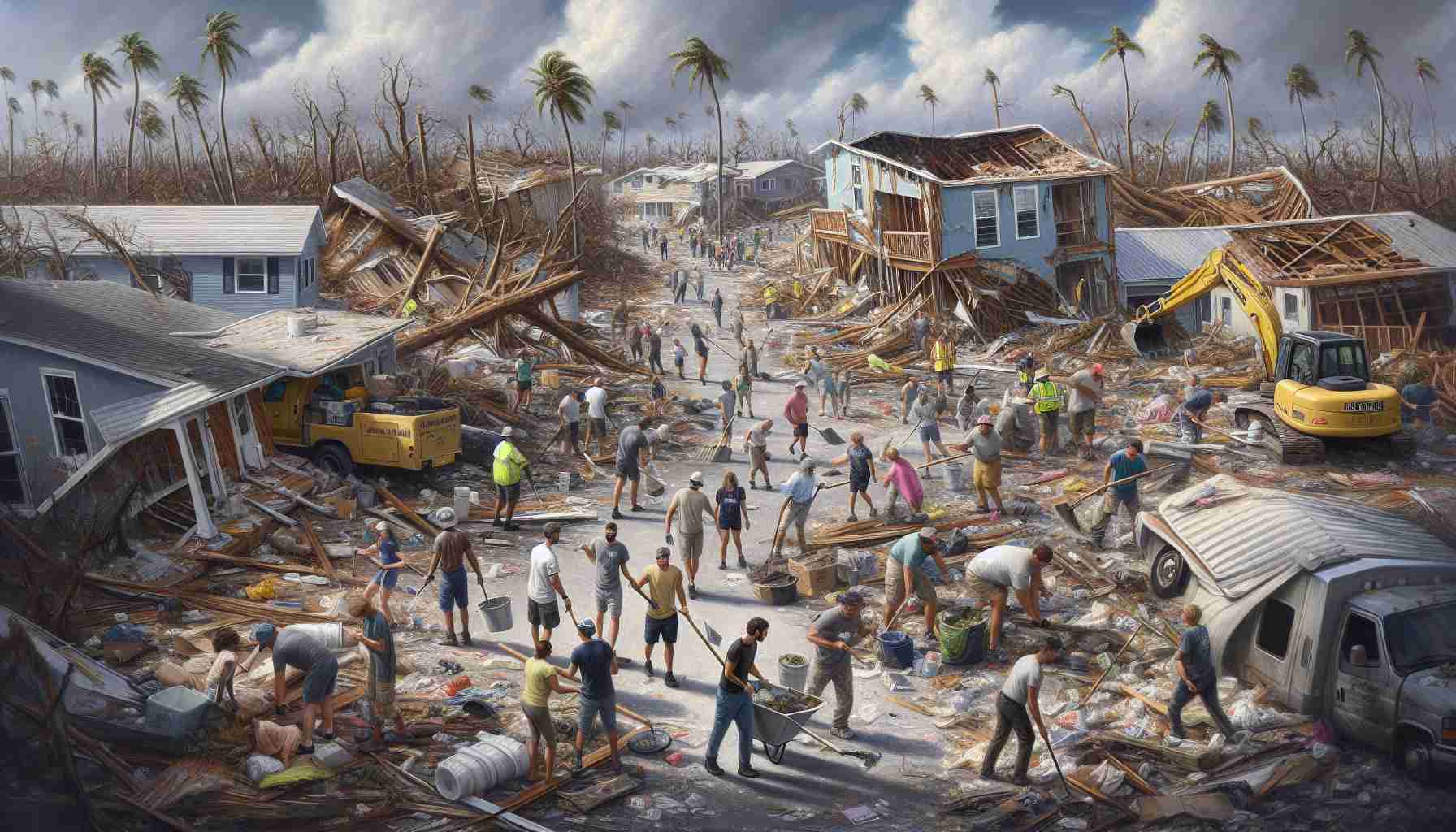
In the aftermath of Hurricane Milton, Florida is grappling with significant destruction and ongoing power outages affecting millions of residents. This powerful storm, which reached Category 3 intensity, not only brought excessive winds and relentless rain but also triggered tornadoes across the state. While the anticipated devastating storm surge did not materialize, heavy flooding was reported, particularly in coastal regions and vulnerable barrier islands.
Aerial photographs reveal the widespread devastation, especially in areas like St. Armands Key, where streets were inundated. The images showcase the dire situation with homes submerged and debris littering the landscape. In Manatee County, Ana Maria Island faced a similar fate, as storm surge and strong winds left many coastal homes under water and surrounded by rubble.
One notable incident included damage to a condominium in Cortez, where significant portions of the roof were torn away, exposing the interior to the elements. The wreckage, combined with floodwaters, paints a bleak picture of recovery efforts ahead.
Tropicana Field, notably used as a first responder staging area, also faced extensive damage. The high winds had ripped through its fabric roof, highlighting the storm’s ferocity. Recovery initiatives are just commencing, as communities unite to rebuild and restore normalcy amidst this natural disaster’s chaotic aftermath.
Florida Faces Long Road to Recovery After Hurricane Milton
In the wake of Hurricane Milton, Florida’s recovery efforts are not just about restoring physical infrastructure but are also intertwined with addressing community needs, economic impacts, and environmental concerns. As residents begin to sift through the wreckage, several important questions arise regarding the path to recovery and the challenges ahead.
What are the immediate challenges for Florida in the recovery process?
One of the most pressing challenges is restoring power and essential services to the affected regions. According to local utility companies, it may take weeks to fully restore electricity and water services, particularly in rural areas where infrastructure is already vulnerable. Additionally, debris removal and damage assessments pose significant logistical barriers, making recovery slower than anticipated.
How are local economies affected by Hurricane Milton?
The economic toll on local businesses is profound. Many small enterprises, particularly in tourism-dependent regions, are facing potential closures due to extensive damage, making it difficult for residents to regain their livelihoods. It is estimated that recovery may take a year or more for some businesses, with estimates suggesting that Florida’s economy could lose billions of dollars due to the storm’s impact.
What are the longer-term implications for infrastructure resilience?
Hurricane Milton exposed vulnerabilities in Florida’s infrastructure, raising critical questions about future disaster preparedness. The storm highlighted the need for improved building codes and flood defenses, especially in coastal communities. Environmental experts are also urging the state to rethink its approach to coastal management and invest in natural barriers like wetlands that can absorb storm surges and mitigate flooding.
Key Advantages and Disadvantages of Recovery Efforts
Advantage: The collaborative spirit among communities and organizations is strong. Residents are banding together to support one another through mutual aid initiatives, ensuring that food, shelter, and resources are distributed where they are most needed.
Disadvantage: However, the sheer scale of the disaster complicates these grassroots efforts. Larger entities, such as FEMA and state agencies, may not mobilize resources quickly enough to meet the urgent demands in the first phases of recovery, leading to frustration among residents.
What controversies have emerged concerning the response to Hurricane Milton?
One significant controversy revolves around the allocation of funds from federal disaster relief agencies. Communities are voicing concern over whether the distribution of resources will adequately meet the needs of the most affected areas. Additionally, there are ongoing debates about whether the state’s existing evacuations and disaster preparedness plans were sufficient, as many residents reported feeling unprepared for the storm’s intensity.
Conclusion
As Florida navigates the extensive challenges of recovery after Hurricane Milton, the focus must not only remain on rebuilding but also on learning from this event to foster a more resilient future. Continuous community engagement and proactive planning are essential to ensure that the state’s infrastructure and economy can withstand the inevitable future storms.
For updates on recovery efforts and resources, visit Florida Disaster or stay informed through local news outlets for the latest developments on this critical situation.



